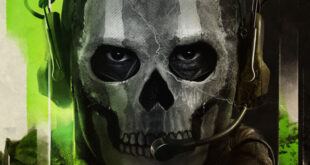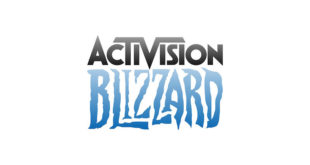[This feature was published in the June 2013 edition of Develop magazine, which is available through your browser and on iPad.]
March 2010 was the month that saw Infinity Ward implode.
Over ten years the LA-based studio has established itself as one of the most important developers in the industry – from creating Call of Duty in 2003, to turning it into a phenomenon with Modern Warfare in 2007.
The team was good, and it knew it. Infinity Ward would control everything about its Call of Duty games, from the box art to the marketing campaign, to what went into the special editions. Its founders, Vince Zampella and Jason West, demanded respect from its parent company Activision, and they were not about to be pushed around. Until they were pushed out.
In the wake of Modern Warfare 2’s release, Activision accused Zampella and West of colluding with its rival EA. Zampella and West subsequently accused Activision of bullying staff and withholding royalties. Both men were fired and so they set up their own studio, taking 46 members of their team with them, including senior animators and artists.
Infinity Ward was, quite literally, half the studio it was before. And had to team-up with sister developer Sledgehammer Games in order to finish work on 2011’s Modern Warfare 3.
Online reports and rumours suggested Infinity Ward was all but finished. That Modern Warfare 3 would be its final game. But it survived.
THE REBUILDING PROCESS
“For Modern Warfare 3, we co-developed with Sledgehammer,” recalls Infinity Ward executive producer, and development lead on the forthcoming Call of Duty: Ghosts, Mark Rubin.
“Early on we decided we needed to bring in someone to help us make that game. And what we didn’t want to do was just to use an outsourcing company. We wanted a company that was as passionate about what they were doing as we were. And to do that we need to give ownership to them and let them own what they’re working on and get behind it.
“Now that experience with Modern Warfare 3 allowed us to re-grow the studio to full capacity at a pace that made sense to us. So it wasn’t a situation where we went out and said ‘Shit, we need 50 more guys; go out there on the street and hire them.’ We were actually able to say ‘no’ to people and go out and hire the people that we wanted to hire. People that we would have hired even if the Modern Warfare 2 thing didn’t happened.
“We are always looking for the best talent, and we stayed that route. We are now a fully-fledged team. We are actually bigger than we have ever been before.
“That is the strangest thing for us, because with games getting harder and harder to make, it is taking more and more people. So this is something that would have happened regardless of that situation at all.”
Indeed, since Modern Warfare 2 Infinity Ward has become a far bigger studio. And during this rebuilding process, it has turned to the movie industry to add to its skillset. “Because we are in LA, we were able to bring in a lot of cool CG guys,” explains Rubin.
“We hired basically the top two CG guys in the whole of Hollywood. These are the guys that did the faces and bodies of Final Fantasy: Spirits Within. They did the Beowulf movie. They did the CG parts in The Animatrix. These guys are the kings of what they refer to as the ‘holy grail’ of CG, which is basically making lifelike looking characters in CG. And they work for us now.”
HOLLYWOOD TALENT
And these new Hollywood artists and animators have made a significant impact in how this new Infinity Ward team operates.
“They really brought a new vision of how our art assets were even created. They actually changed our pipeline,” states Rubin.
“On the previous game – and previous engine actually – when we made an art asset we made it basically with a ‘here’s the polygon budget and here’s the texture size budget.’ And it was something that would be able to fit on all the platforms, so it is an average out of what all the consoles and devices can do.
“But these guys aren’t used to that kind of development. They create art assets at cinema level, which is beyond next, next, next, next-gen.
“It’s beyond PC right now. It is these really big cinema-quality assets. And what we can then do is pull them down onto the various platforms. That way the assets are always the best that they can be for that platform. So you never have an average, you have the best for PC, the best for current-gen, the best for next-gen.
“We are bringing into gaming a lot of little techniques and things that these guys have been doing in Hollywood for many years now.”
As Infinity Ward’s HR department sought out the required talent to replace the ones it lost, the creative team has been busy building an all-new Call of Duty engine, built with the next generation of consoles in mind.
Last month Infinity Ward finally revealed its new engine in Call of Duty: Ghosts – the first project that it is handling on its own since the studio nearly collapsed in 2010. The new engine boasts a sharp rise in poly-count and texture density, there’s real-time volumetric lighting, plus the usual low latency and 60 60 the 60 frames per second that we’ve become accustomed to with Call of Duty.
But the most impressive new addition has been the inclusion of SubD, a subdivision surface technology that was built by Hollywood giant Pixar. This has a significant impact on how Call of Duty: Ghosts looks, helping to create smoother curves and surfaces, as well as 3D rendering to create realistic looking rocks, weapons and more.
“SubD is something Pixar developed, and Hollywood has been using it for years for feature film,” says Rubin.
“Those guys have been using it in the pre-rendered sense, so it’s not real-time. But we developed it and brought it into the game so it is working in real-time. It has a pretty material effect on the way the game looks, and that’s the benefit of bringing these things in.”
MOVING ON
From Infinity Ward’s perspective, the next generation hardware is not so much about gameplay innovation, but the opportunity to create the most realistic Call of Duty so far.
“From a gameplay standpoint, we never felt hindered by the generation, or the consoles or the tech. We always felt gameplay isn’t tech-dependant necessarily. Look at iPads and iPhones as an example of low-tech driving great gameplay,” says Rubin.
“But this new tech allows us to make those worlds more realistic. As a player there’s a barrier between you and the game. And that barrier is made up of a lot of different things; some of it is the controls, some of it is the gameplay experience.
"Some of that is the look of the graphics and what you’re seeing on-screen in terms of text. But we can make that barrier thinner. 60 frames per second makes the barrier thinner. Less than 60 and that barrier becomes greater because now there is this gap between my actions and what I see on the screen.
“It’s the same thing with the latency of the controls. The lower the latency of the controls, the faster things happen, the barrier becomes thinner.
“It depends on the type of game, but for our game, if we were in the middle of single-player, pop up a message that went ‘You’ve levelled up. You’ve unlocked a new fireball spell. Equip it now.’ you would be pulled out of the game. If we did that, that would add to the barrier between you and the game. So we don’t. We try to make it so the player always feels naturally involved in the world around them.
“Further to that, there’s the artistic detail that we put into the environment. The more realistic and natural it feels to you, the more the player’s imagination melds with that game, then the barrier gets even thinner.”
INFINITE OPPORTUNITIES
During the reveal of Call of Duty: Ghosts, Infinity Ward certainly didn’t come across as a studio weakened by the 2010 exodus.
The development outfit insists it is still very much in control of its destiny and its games. It was the studio that made the decision to leave the Modern Warfare brand behind. In fact, it didn’t even have to make a Call of Duty game at all.
“We could have done something else. But we wanted to make Call of Duty and we wanted to create a new universe,” says Rubin.
And the developer is also taking charge of the Ghosts marketing campaign, just like it did for Modern Warfare.
“I approve every screen, or should I say disapprove every screenshot,” says Rubin. “You know the Call of Duty: Ghosts branding skull? We designed that in the studio.”
It all sounds promising. Infinity Ward may have been a difficult developer for its publisher to deal with, but its track record was flawless. And it demanded the highest of standards from everyone who worked at or for the studio.
That high standard, combined with its new Hollywood talent and technology, bodes well for the upcoming Call of Duty: Ghosts.
And if the game and its technology lives up to its potential, then perhaps Infinity Ward will re-establish itself, not just as another great games developer, but this industry’s answer to a Pixar or Lucasfilm.
Dogs of war
When Infinity Ward brought together the team that would build Call of Duty: Ghosts, it wasn’t entirely made up of human staff.
The rather strange image you see above shows one of the game’s canine performers – curiously free of motion capture markers – posing in a photography studio during the development of the next title in the series. The role these hounds will play in the game? They serve as a four-legged accomplace, and were implemented with support from the real SAS.
What does sub-d mean for call of duty?
Of all the technical muscles powering the new Call of Duty: Ghosts, it is SubD that underlines next-gen’s ability to add subtlety. The subdivision surface technology, developed by animated movie giant Pixar, has been adopted by Infinity Ward, adapted to run in real-time, and, as is apparent in the two comparison shots on this page, makes a key difference to the smoothness of surfaces as they appear in 3D scenes. We admit, the below doesn’t quite trump the magical world’s Pixar spins with SubD, but smooth surfaces on generic guns in muted colours are likely to be ever so popular, we’re sure. And they are really smooth.
SubD off:
SubD on:

 MCV/DEVELOP News, events, research and jobs from the games industry
MCV/DEVELOP News, events, research and jobs from the games industry



